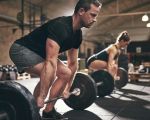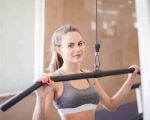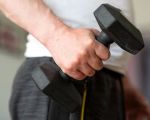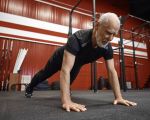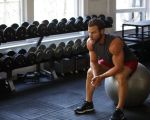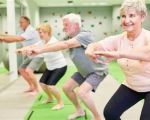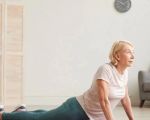- 1-Importance-of-Strength-for-Dancers
- 2-Core-Components-of-Gym-Workouts-for-Dancers
- 3-Lower-Body-Strengthening-Exercises
- 4-Upper-Body-and-Core-Conditioning
- 5-Integrating-Flexibility-and-Mobility-Training
- 6-Real-Life-Success-Stories-from-Dancers
- 7-Tips-for-Creating-Effective-Workout-Plans
1. Importance of Strength for Dancers
Strength is often an overlooked yet fundamental aspect of a dancer’s performance. While dance demands grace, flexibility, and endurance, strength provides the foundation that supports those qualities. Without sufficient muscular strength, dancers are more prone to injuries, fatigue, and compromised technique.
Strong muscles improve balance, control, and explosive power, which are vital for jumps, lifts, and intricate footwork. Moreover, strength training enhances overall body awareness, allowing dancers to execute movements with precision and confidence. Recognizing this, many professional dance companies now incorporate gym workouts for dancers strength into their training regimens.
The synergy between dance and strength training creates a resilient body capable of withstanding the physical demands of rehearsals and performances. It also supports longevity in a dancer’s career, reducing wear and tear on joints and soft tissues.
2. Core Components of Gym Workouts for Dancers
When designing gym workouts for dancers strength, it’s important to focus on functional exercises that mimic dance movements and promote balanced muscle development. The key components include lower body strength, upper body and core conditioning, and injury prevention through mobility work.
A comprehensive routine will emphasize multi-joint exercises such as squats, lunges, and deadlifts to build powerful legs and glutes. Upper body workouts should target the shoulders, back, and arms, essential for lifts and posture. Core workouts stabilize the pelvis and spine, crucial for fluidity and control.
Additionally, integrating mobility and flexibility exercises ensures that increased strength does not come at the expense of the dancer’s natural range of motion. This holistic approach ensures the body is strong, agile, and balanced.
3. Lower Body Strengthening Exercises
The lower body is the powerhouse of most dance movements. Exercises such as squats and lunges strengthen the quadriceps, hamstrings, and glutes, enhancing jump height and landing control. For example, Bulgarian split squats improve unilateral leg strength and balance, directly benefiting dance techniques that require single-leg stability.
Deadlifts, performed with proper form, develop the posterior chain—glutes, hamstrings, and lower back—supporting strong extensions and safe backbends. Calf raises are also essential for improving ankle strength and endurance, helping dancers maintain relevé positions longer.
These exercises not only build strength but also promote joint stability, which is critical to prevent common dance injuries such as ankle sprains and knee pain. Consistent lower body training builds explosive power that translates into more dynamic performance.
4. Upper Body and Core Conditioning
Though dance often emphasizes lower body strength, the upper body and core play equally important roles. Upper body workouts including push-ups, rows, and shoulder presses develop the strength needed for lifts, partnering work, and elegant arm lines.
Core conditioning is arguably the cornerstone of dance strength training. Exercises like planks, Russian twists, and leg raises build deep abdominal and back muscles that stabilize the spine and pelvis. This stability enhances balance and alignment during complex choreography.
For example, dancers performing turns or jumps benefit greatly from a strong core that controls rotation and landing. Pilates and barre-inspired workouts complement traditional strength training by focusing on controlled, precise core engagement.
5. Integrating Flexibility and Mobility Training
Building strength should never compromise flexibility. In fact, integrating flexibility and mobility work into gym workouts for dancers strength is essential to maintain fluidity and prevent stiffness. Dynamic stretches before workouts prepare muscles and joints, while static stretching after sessions helps with recovery and range of motion.
Mobility drills targeting hips, ankles, and thoracic spine improve joint health and movement quality. For instance, hip openers and ankle circles increase the dancer’s ability to achieve deep pliés and clean footwork.
By combining strength with mobility, dancers can improve performance quality while reducing the risk of overuse injuries. This balanced approach leads to a more sustainable and enjoyable dance journey.
6. Real-Life Success Stories from Dancers
Many dancers have shared inspiring stories about how gym workouts for dancers strength transformed their performance. Take Emma, a contemporary dancer who struggled with recurring ankle injuries. After incorporating targeted strength training focused on her lower body and core, she not only overcame injuries but also improved her jump height and balance significantly.
Similarly, Michael, a ballet dancer, credits his increased upper body strength from weight training for better partnering skills and improved posture on stage. These testimonials highlight the practical benefits and real-world impact of dedicated strength workouts tailored to dancers.
Such stories reinforce that investing time in gym workouts designed for dancers builds resilience and unlocks new levels of artistry and confidence.
7. Tips for Creating Effective Workout Plans
When crafting gym workouts for dancers strength, personalization is key. Understanding individual weaknesses and dance styles helps in selecting the right exercises. It’s advisable to consult with a trainer knowledgeable in dance physiology to tailor a plan that addresses specific needs.
Consistency matters more than intensity. Regular sessions focusing on quality movement reduce injury risk and maximize gains. Tracking progress through strength assessments or video analysis can motivate and guide improvements.
Lastly, complementing strength workouts with adequate rest, nutrition, and mental focus supports overall wellness. For dancers seeking expert guidance and products to enhance their training, Fitness offers comprehensive resources and recommendations suited to their unique goals.

